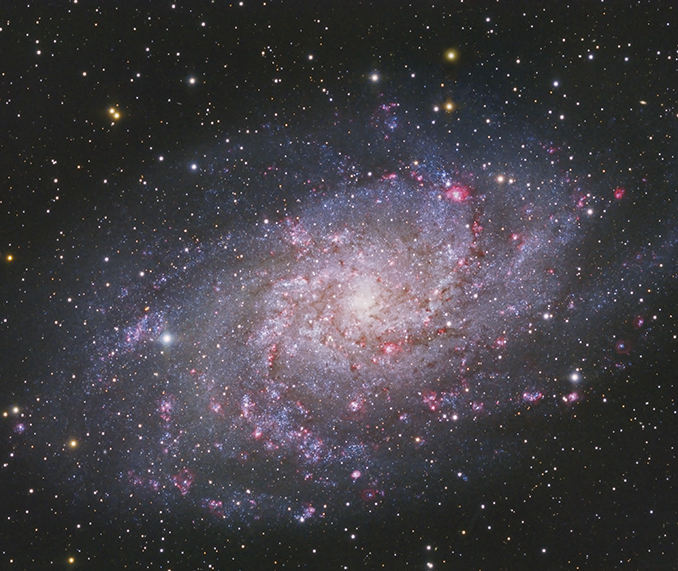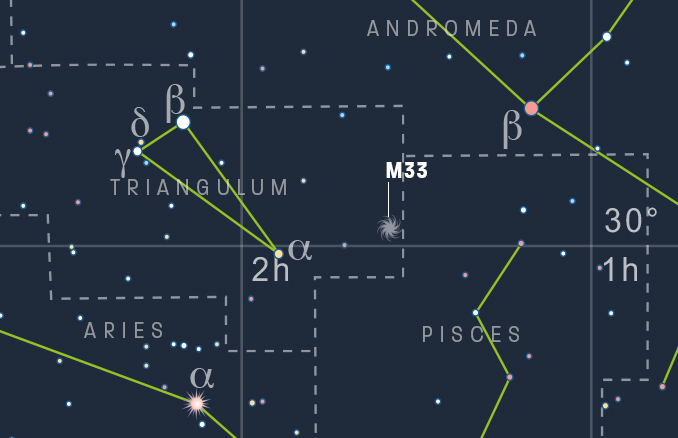
Messier 33 (NGC 598), the famous Triangulum Galaxy, takes its nickname from the constellation that hosts it. is a superb spiral galaxy that favourably presents itself face-on to our line of sight. Physically, it’s the third-largest galaxy in our Local Group of galaxies, and as major galaxies go, only marvellous M31 in Andromeda lies closer to us. These attributes give us a breathtaking view of it across its beautiful and complex form, which is substantial enough to make it appear over twice the size of the full Moon.
Eagle-eyed observers at the darkest sites can spot M33 with the naked eye, and a pair of binoculars or a small telescope comfortably lift it from the sky background on a transparent, moonless night free from major sources of light pollution.
The Hubble Space Telescope has studied Messier 33 down the years, finding no trace of a supermassive black hole lurking at its core, which is unusually small core compared to that of other spiral galaxies. Hubble also determined that M33 is undergoing rapid star-birth in its numerous blue-coloured regions, indicating an overall star formation rate perhaps ten times that of the Andromeda Galaxy. However, its estimated 40 billion star count is dwarfed by M31’s one trillion (1 x 1012)!

How to observe
Messier 33 is easy to find, lying just inside Triangulum’s western boundary with Pisces, some 4.3 degrees west-north-west of magnitude +3.4 Mothallah (alpha [α] Trianguli), the star marking the apex of Triangulum’s signature asterism, a narrow triangular outline of third-magnitude stars.
As soon as darkness falls at mid-month, M33 has climbed to a healthy altitude in the east and it remains on show throughout the rest of the night, culminating at 1am BST at a splendid 70-degree or so altitude.
M33 sports a very large apparent diameter of 73 × 45 arcminutes and shines with the magnitude of a sixth-magnitude star. However, with that light spread over such a large area of sky, this massive spiral is blighted with low surface brightness, which on occasion makes it not as easy to see as one might have hoped. Under an urban or even a suburban sky on an inferior night, M33 can appear lacking in contrast and melts into the sky background.
At a dark, countryside site on a moonless night, however, it’s a fine sight through binoculars or a small, wide-field refractor. With a fully dark-adapted eye, the view through a 100–150mm (four- to six-inch) telescope can be breathtaking, as the galaxy takes on a ’S’-shaped form.
Within M33 lies NGC 604, a huge, reddish emission nebula where stars are forming. It’s the second most luminous H-II region in the Local Group after 30 Doradus in the Large Magellanic Cloud. A telescope in the 300mm (12-inch) class can show it. Look for it about 10 arcminutes north-east of M33’s core.
Finally, if you find yourself under a pristine sky at one of the world’s dark sites, do have a crack at locating M33 without optical aid. If you succeed in spotting it, you’ll be one of only a small band of lucky observers!




